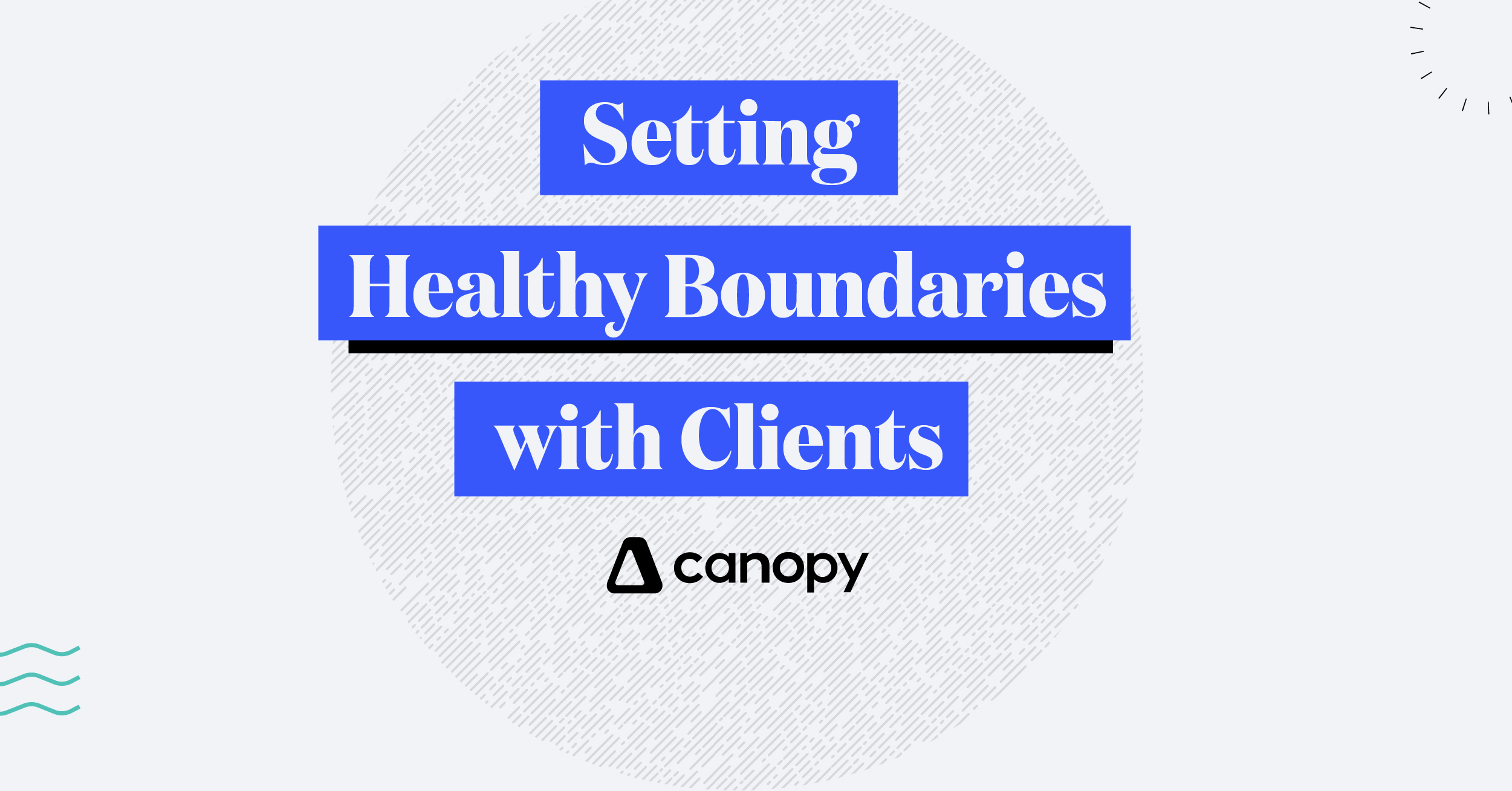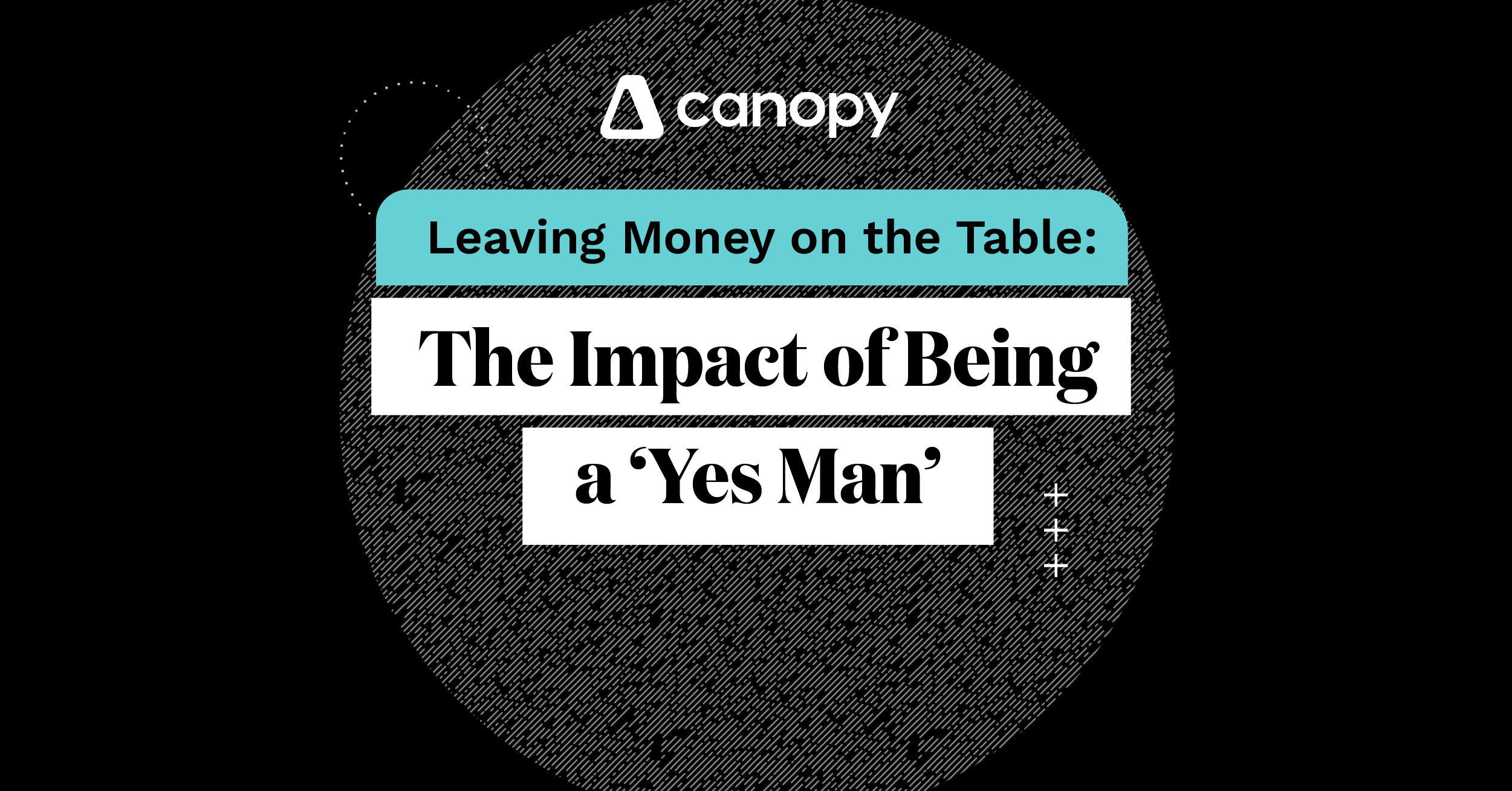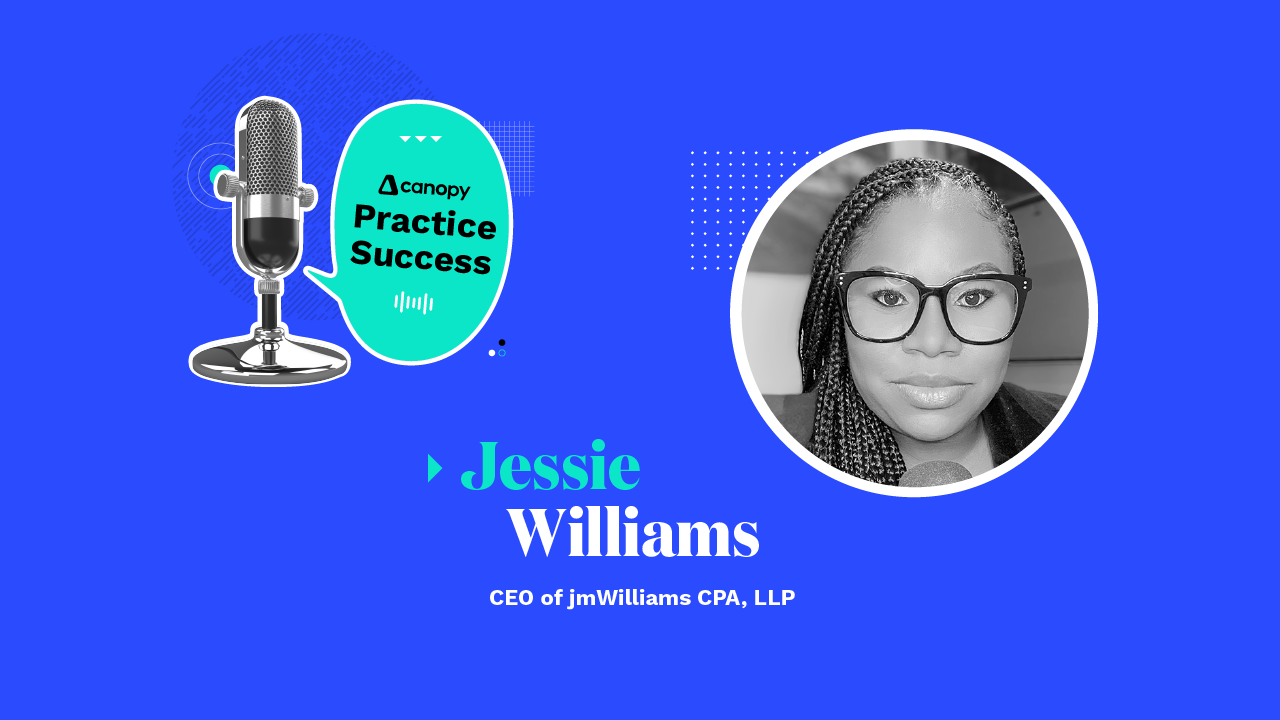So you've landed a new client at your accounting firm — congratulations! You tell them you're flexible and can work with them whenever they want, leaving an open-ended working agreement. They ask you to throw in a few extra services like bookkeeping and payroll management — since they're a new client and promise to tell all their friends about your firm. Without hesitation, you agree. You're happy to grow your practice, build rapport, and make more money.
You should have realized that your point of contact is overseas, and you want to be available when they are. This means you'd have to work into the wee hours of the morning. They also prefer communication on weekends.
Don't kiss your Saturdays goodbye just yet — welcome to the uncomfortable but necessary world of boundaries.
In the world of accounting, long hours, high demands, and meeting tight deadlines are the norm, especially from December through April (hello, taxes). While setting healthy boundaries may seem impossible, it is vital. Boundaries create a more balanced work life and more positive client relationships. A 2023 study showed that 57 percent of people had an improved work-life balance due to setting professional boundaries.
This article will reveal a few tips for setting clear boundaries with your clients to avoid burnout, grow your firm, and enjoy your job more.
Getting Started
Accountants face many challenges when professional boundaries are blurred. Overwork, stress, and potential client misunderstandings can lead to frustration and poor work-life balance.
Before you implement boundaries with clients, take a moment to consider your boundaries. The Forbes Coaches Council suggests creating a list of personal boundaries before engaging with clients. Once you make a list, repeat it aloud. They also recommend listing out circumstances that cause you to compromise your boundaries.
For example, do you require payment for your services upfront? If so, what would motivate you to bend that requirement? Write down your answer.
There is a lot of gray area when setting boundaries; they look different for everyone's practice. Take some time to think about this beforehand.
Get Comfortable With Saying "No."
Learning to say no is hard, especially when you run your own business. You want to help everyone, but the reality is that you will only sometimes be able to. Saying yes all the time can set us up for failure. Saying no can help you balance your workload and help you focus on clients and areas of the business you're already committed to.
The best times to say no are when:
- The request is outside of the scope
- It is beyond your role
- You don't have the time
- There is a better solution or person for the job
The ability to say "no" is an essential skill in maintaining personal boundaries and ensuring mental well-being. It empowers individuals to prioritize their needs and limits, fostering self-respect and resilience. Frequently, societal expectations and fear of rejection can pressure individuals into agreeing to tasks or obligations that may be detrimental to their health or personal growth. By learning to say "no", one can manage their time effectively, reduce stress, and lead a balanced and fulfilling life.
Setting Expectations
Setting clear expectations with clients eliminates misunderstanding, helping both parties move forward with certainty. It's best to discuss these expectations and write them in writing. We also suggest providing the client with a working agreement that includes the project's scope and the client relationship's scope.
Many firms have an onboarding process for new clients that includes something similar to an intake form, engagement letter, kickoff call, presentation or demo, and a proposal.
Jason M Blumer, CPA, CEO of Thriveal and Blumer CPAs, shares, "We like to over-communicate, so this final step in our onboarding process is used to go over the contract again and make sure it's clear what they are agreeing to pay…We even update and resend the contract (if necessary) just to clarify any technical oversights or add additional points to the contract."
Some important expectations to be clear on include:
- Working hours
- Methods of communication
- Late payment policies
- Breach of contract
Setting these boundaries doesn't have to be scary or oddly formal. Including them in writing and communicating them from the start will help eliminate issues down the road.
For example, you have two options if a client reaches out to you after hours with a simple question. You could respond, letting the client know you are generally available after hours and may contact you at all hours of the day. On the other hand, you could set a boundary for your working hours and say something like this:
"Hi (name), thanks for reaching out with your question. I would be happy to look into this tomorrow morning."
Boundaries for Clients Means Freedom for You
Establishing clear boundaries will improve how you work and help you be happier with your job overall. While they seem daunting, taking time to reflect on personal boundaries is a significant first step. From there, saying no when necessary and making expectations clear from the start will help you to form great professional relationships with your clients. Remember, boundaries are essential for everyone, especially in your accounting practice.

Chris is a content manager for Canopy, joining the team with a combined eight years of experience as a copywriter, editor-in-chief, and content marketer. He's a skilled wordsmith and strategic thinker who shapes brand identity through compelling content and fosters a collaborative and innovative environment. With a passion for storytelling and a dedication to excellence, he is a driving force behind any company's success in content marketing. Champion of the Oxford comma.
READ MORE BY Chris






Get Our Latest Updates and News by Subscribing.
Join our email list for offers, and industry leading articles and content.